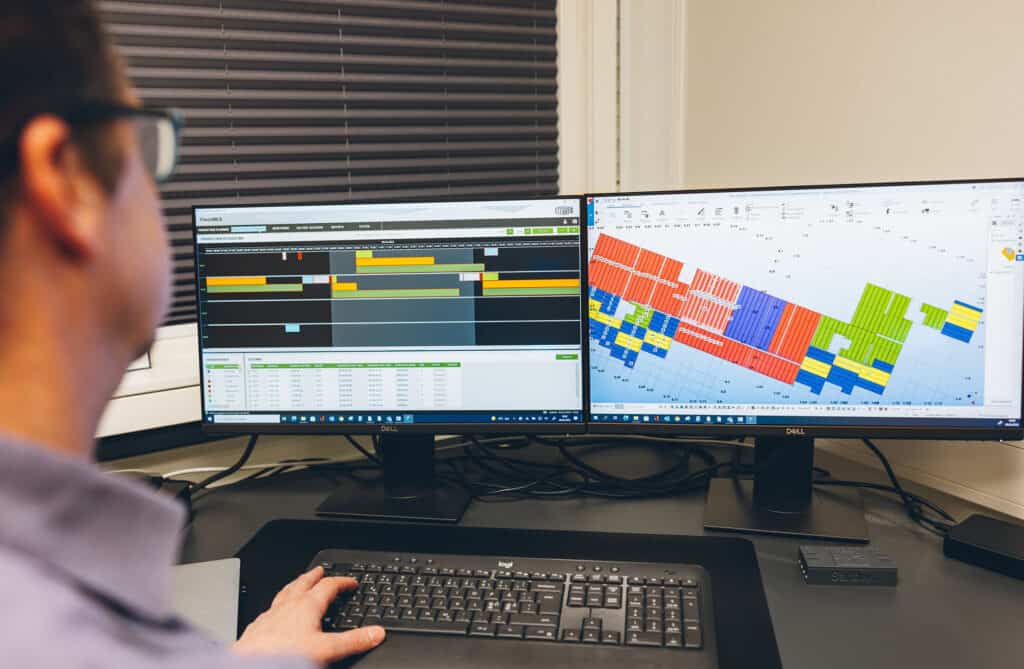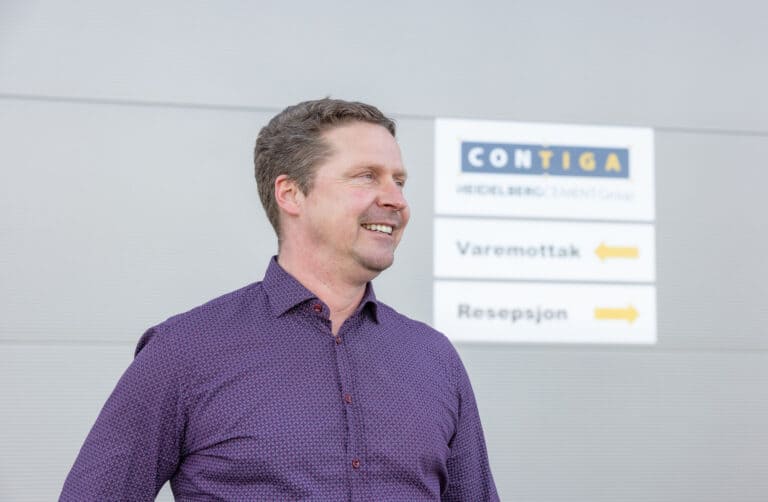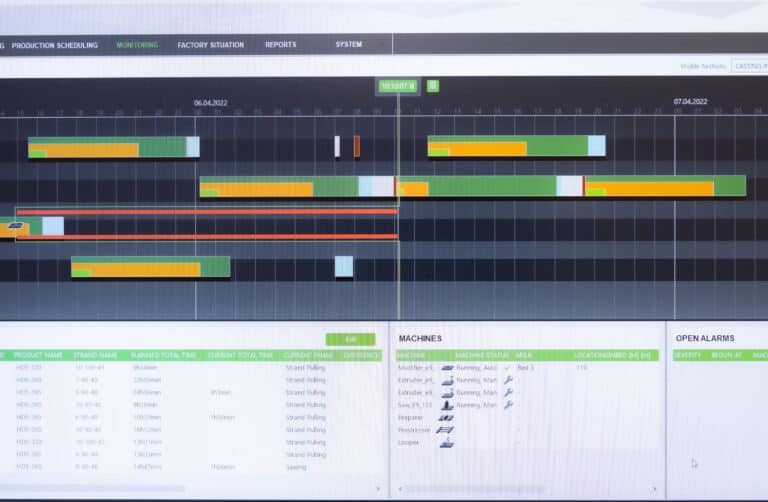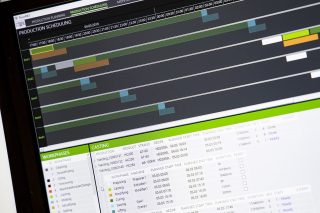At Contiga’s hollow core factories in Norway, slab information is sent directly from a file to the automated Elematic machinery.
The precaster has used Elematic Plant Control for manufacturing execution for about two years. The Plant Control manufacturing execution system is a hands-on tool for production planners and supervisors, consisting of different modules. Contiga uses the planning, monitoring, and scheduling modules.
“It is quite easy to get on a high level,” says Technical Advisor Ove Sandvin. He is particularly fond of the automatic nesting feature that places the hollow core slabs optimally in the casting beds to improve the processes and reduce strand waste.
“The top benefit is that you can easily export all floors from different projects, and you can easily use the filters to optimize the production beds,” Sandvin says.
“We use the nesting ID from the planning system entirely through the whole production process. That means in the stresser, the extruder, the modifier, as well as in the batching & mixing plant.”
Sandvin points out that designers and production planners have access to the same BIM models. “If there is a problem, the production planner can grab the phone and call a designer. As you are both working on the same model, it is easy to sort out any problems before exporting the files into Plant Control”
“In the beginning, when the BIM models arrived from the designers, one of the most challenging parts was that the openings had to be changed from a 2D perspective to 3D. The machines will perform exactly as they are told and hence need to be fed all data correctly,” remembers Sandvin, who soon contacted the Elematic software developers amongst others for help with the matter.
“They have listened to us, so what we have in our system now is quite different from what we had when we started using it. We have experienced that it is easy to make changes,” he says.
“I will advise those who are building a new precast factory now to include the designers and the software developers in an early phase.”




